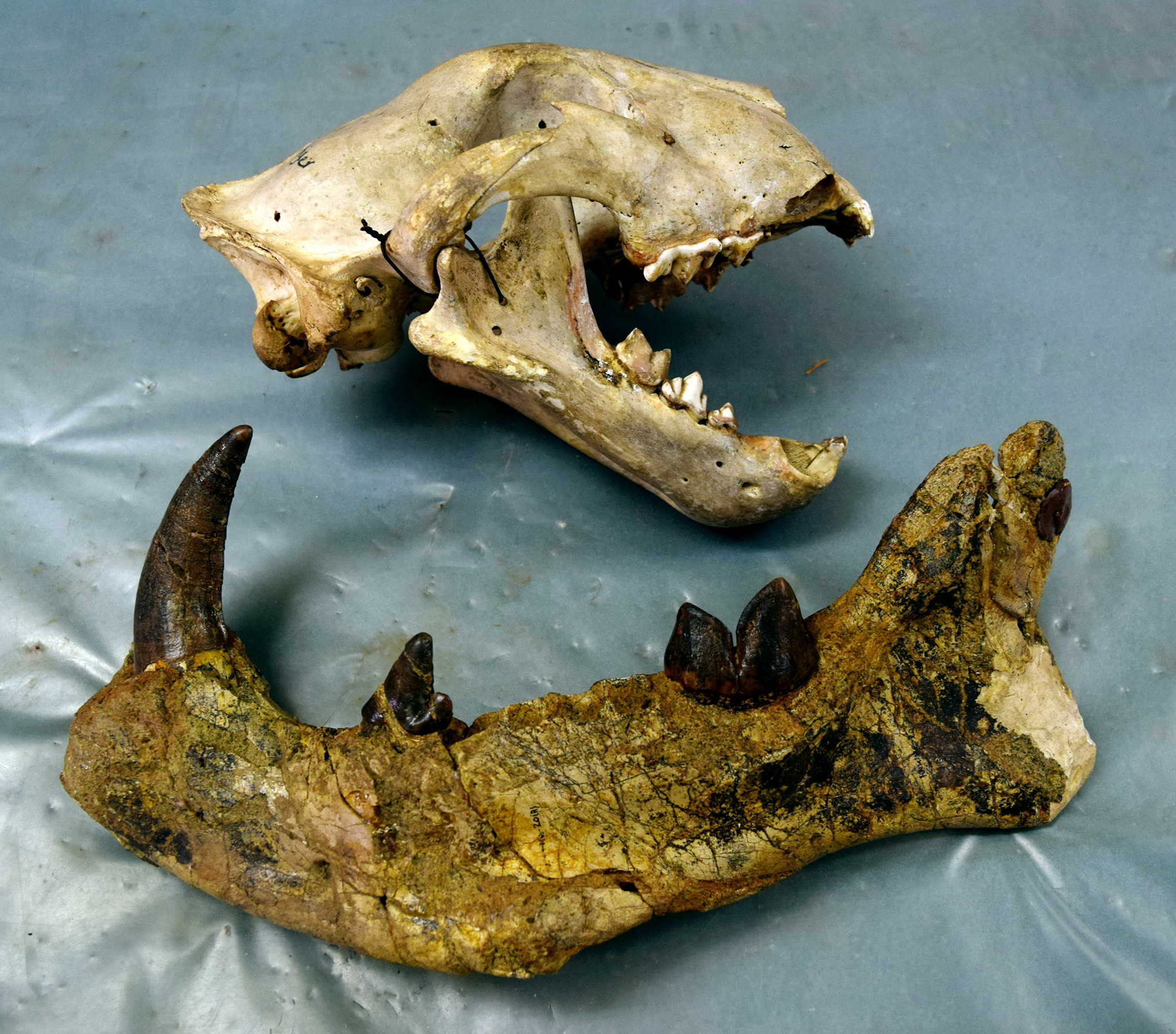A gigantic meat-eating mammal has been discovered — after its jaw, portions of its skull, and parts of its skeleton spent several decades sitting in a museum.
Simbakubwa kutokaafrika, a hyaenodont that was larger than a polar bear. Image credit: Mauricio Anton.
Dubbed Simbakubwa kutokaafrika (means ‘Big lion from Africa’ in Swahili), the gigantic carnivore lived about 22 million years ago (Early Miocene epoch) in what is now Kenya.
The ancient creature was the size of a small rhinoceros and had a body mass of up to 1,500 kg.
Its fossilized remains have been owned by the National Museums of Kenya since the 1980s, but sat in its archives until a closer look revealed they held information about the previosuly unknown mammal.
“Opening a museum drawer, we saw a row of gigantic meat-eating teeth, clearly belonging to a species new to science,” said Dr. Matthew Borths, a paleontologist at Ohio University.
Simbakubwa kutokaafrika was not closely related to big cats or any other mammalian carnivore alive today. Instead, the animal belonged to Hyaenodonta (hyaenodonts), an extinct group of predatory mammals.
For about 45 million years after the extinction of the non-avian dinosaurs, hyaenodonts were the apex predators in Africa.
Then, after millions of years of near-isolation, tectonic movements of the Earth’s plates connected Africa with the northern continents, allowing floral and faunal exchange between landmasses.
Around the time of Simbakubwa kutokaafrika, the relatives of cats, hyenas, and dogs began to arrive in Africa from Eurasia. As the relatives of cats and dogs were going south, the relatives of Simbakubwa kutokaafrika were going north.
“It’s a fascinating time in biological history. Lineages that had never encountered each other begin to appear together in the fossil record,” Dr. Borths said.
Simbakubwa kutokaafrika is the oldest of the gigantic hyaenodonts, suggesting this lineage of giant carnivores likely originated on the African continent and moved northward to flourish for millions of years.
Ultimately, hyaenodonts worldwide went extinct. Global ecosystems were changing between 18 and 15 million years ago as grasslands replaced forests and new mammalian lineages diversified.
“We don’t know exactly what drove hyaenodonts to extinction, but ecosystems were changing quickly as the global climate became drier. The gigantic relatives of Simbakubwa kutokaafrika were among the last hyaenodonts on the planet,” Dr. Borths said.
“This is a pivotal fossil, demonstrating the significance of museum collections for understanding evolutionary history,” added Professor Nancy Stevens, also from Ohio University.
“Simbakubwa kutokaafrika is a window into a bygone era. As ecosystems shifted, a key predator disappeared, heralding Cenozoic faunal transitions that eventually led to the evolution of the modern African fauna.”
Source: sci.news












